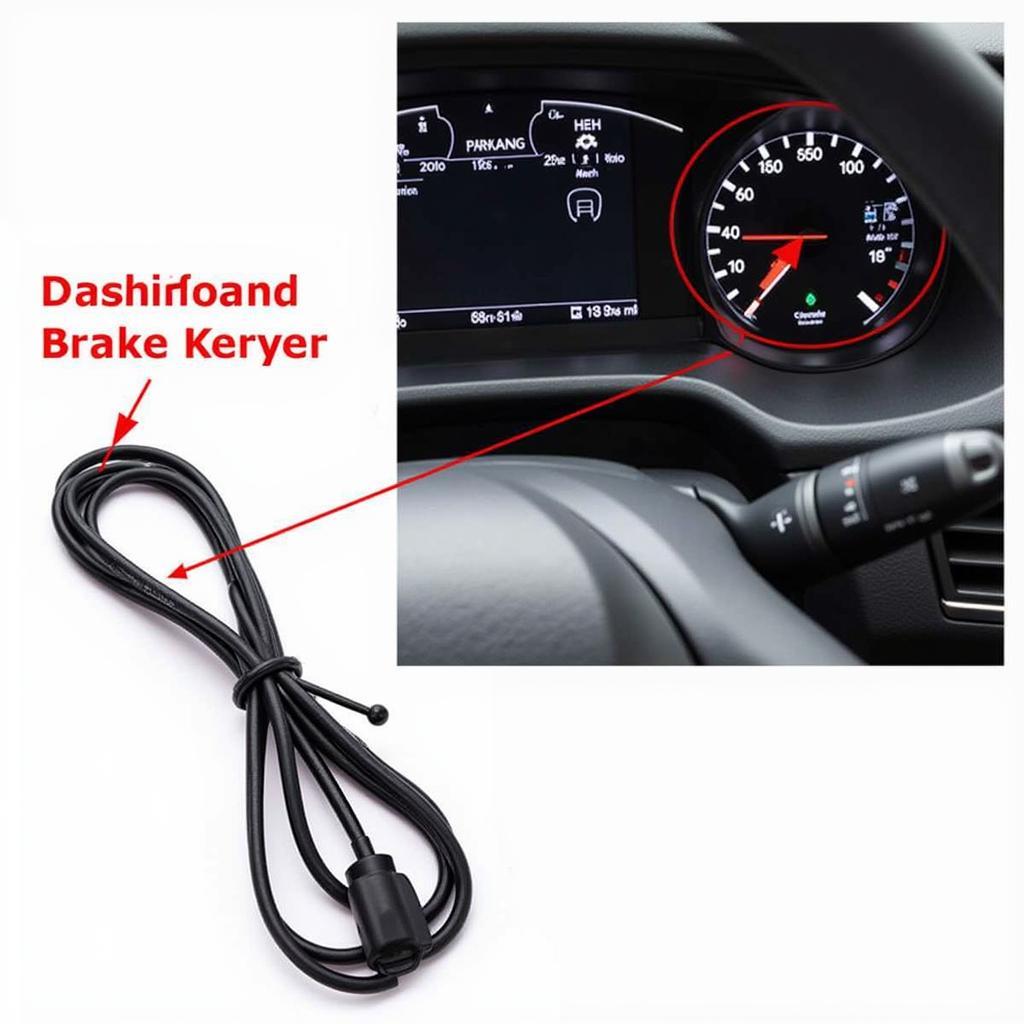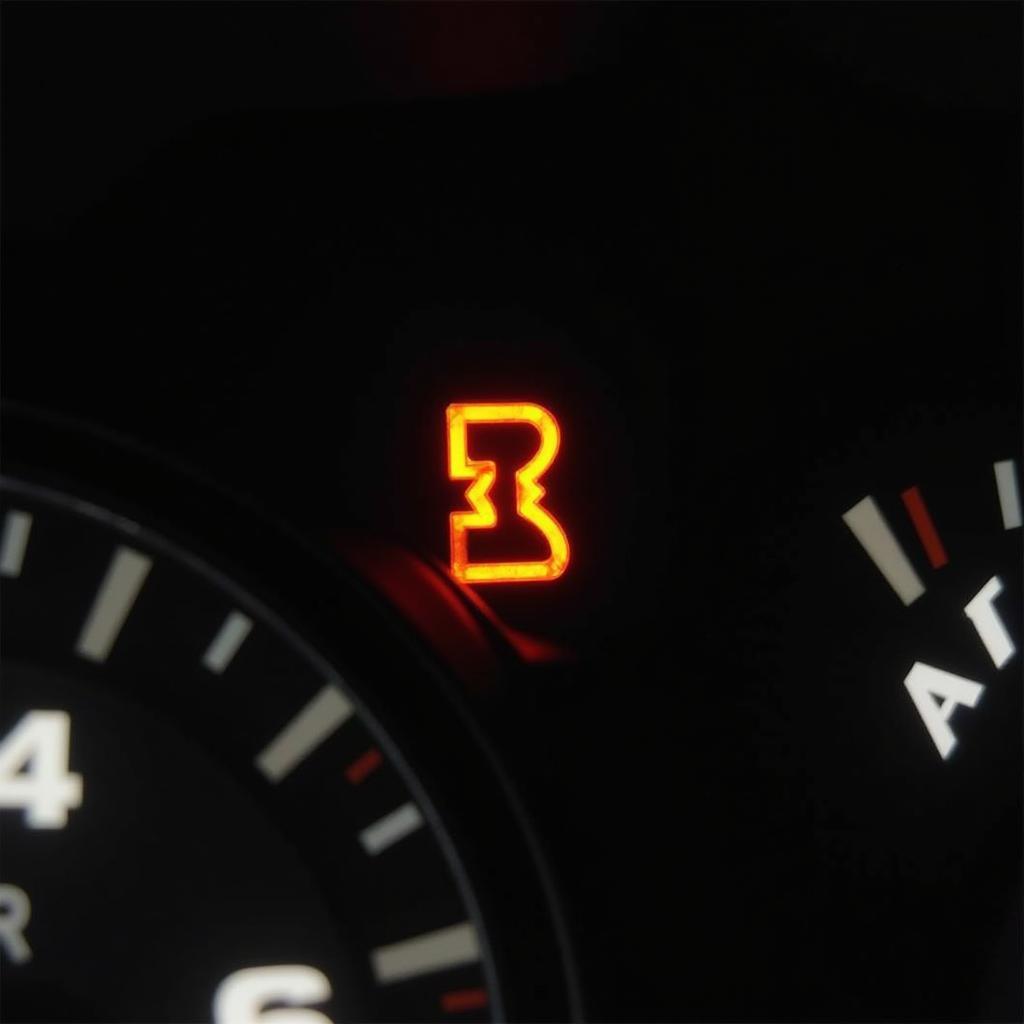Owning a 2013 Audi A4 comes with a sense of sophistication and performance, but like any car, it requires maintenance. One crucial aspect of car care is paying attention to your brakes, and that includes understanding what your dashboard warning lights mean. If you’re seeing the brake pad warning light on your 2013 Audi A4, it’s essential to address it promptly. This article will guide you through the possible causes of the warning light, how to diagnose the issue, and the steps to take to resolve it.
What the Brake Pad Warning Light Means
The brake pad warning light is a safety feature designed to alert you when your brake pads have worn down to a certain point and need replacing. When the light comes on, it typically means the brake pad wear sensor, a small metal tab embedded within the brake pad itself, has made contact with your brake rotor. This contact triggers the warning light on your dashboard.
Why Is My Brake Pad Warning Light On?
While worn brake pads are the most common culprit behind the warning light, there are a few other possibilities:
- Worn Brake Pad Sensors: Sometimes, the sensors themselves can malfunction or wear out prematurely, triggering the light even if your brake pads have some life left.
- Low Brake Fluid: Brake fluid is essential for your braking system to function properly. If there’s a leak in the system, the fluid level will drop, potentially activating the brake pad warning light.
- Electrical Issues: In rare cases, a faulty sensor wire or a problem with the car’s electrical system can cause the light to illuminate.
Diagnosing the Problem
Before you start ordering parts, it’s essential to diagnose the issue accurately. Here’s a step-by-step guide:
- Check Your Brake Pads: This is the most straightforward step. Park your car on a level surface, engage the parking brake, and then take a look at your brake pads through the spaces in your wheels. If you can see less than 1/4 inch of brake pad material, it’s time for a replacement.
- Inspect for Leaks: Carefully examine the area around your brake calipers and along the brake lines for any signs of fluid leakage. Brake fluid is typically clear or slightly yellowish.
- Check Your Brake Fluid Level: Locate your brake fluid reservoir (refer to your owner’s manual if unsure) and check the fluid level. If it’s below the minimum mark, it’s crucial to have the system inspected for leaks.
Addressing the Brake Pad Warning Light
- Brake Pad Replacement: If you find your brake pads are worn, it’s vital to have them replaced as soon as possible. Driving with worn brake pads is incredibly dangerous and compromises your ability to stop effectively.
- Addressing Brake Fluid Issues: If you suspect a brake fluid leak or low brake fluid level, it’s critical to take your Audi A4 to a qualified mechanic immediately. A brake fluid leak indicates a serious safety concern and requires professional repair.
- Seeking Professional Help: If you’re uncomfortable inspecting your brakes or are unsure about what you’re looking for, it’s always best to consult a qualified mechanic. They have the expertise and tools to diagnose and fix any brake-related problems safely and efficiently.
Remote Diagnostics and Programming: A Modern Solution
In today’s technologically advanced world, remote diagnostics and programming offer a convenient and efficient way to address certain car issues, including those related to warning lights.
“Remote diagnostics allow us to connect to a vehicle’s computer system from anywhere in the world,” says automotive electrical engineer, Sarah Chen. “This enables us to retrieve diagnostic trouble codes, analyze sensor data, and often pinpoint the root cause of a problem without the car ever needing to be physically present in a shop.”
While remote solutions might not always be able to physically fix a problem like worn brake pads, they can be incredibly useful in providing a preliminary diagnosis and identifying the faulty component. This can save you time and money by avoiding unnecessary trips to the mechanic.
Conclusion
Ignoring the brake pad warning light on your 2013 Audi A4 can lead to serious safety risks and potentially more costly repairs down the line. By addressing the issue promptly and taking the necessary steps to diagnose and fix the problem, you can ensure the safety and longevity of your vehicle. Remember, when it comes to brakes, a proactive approach is always the safest and most cost-effective strategy.


